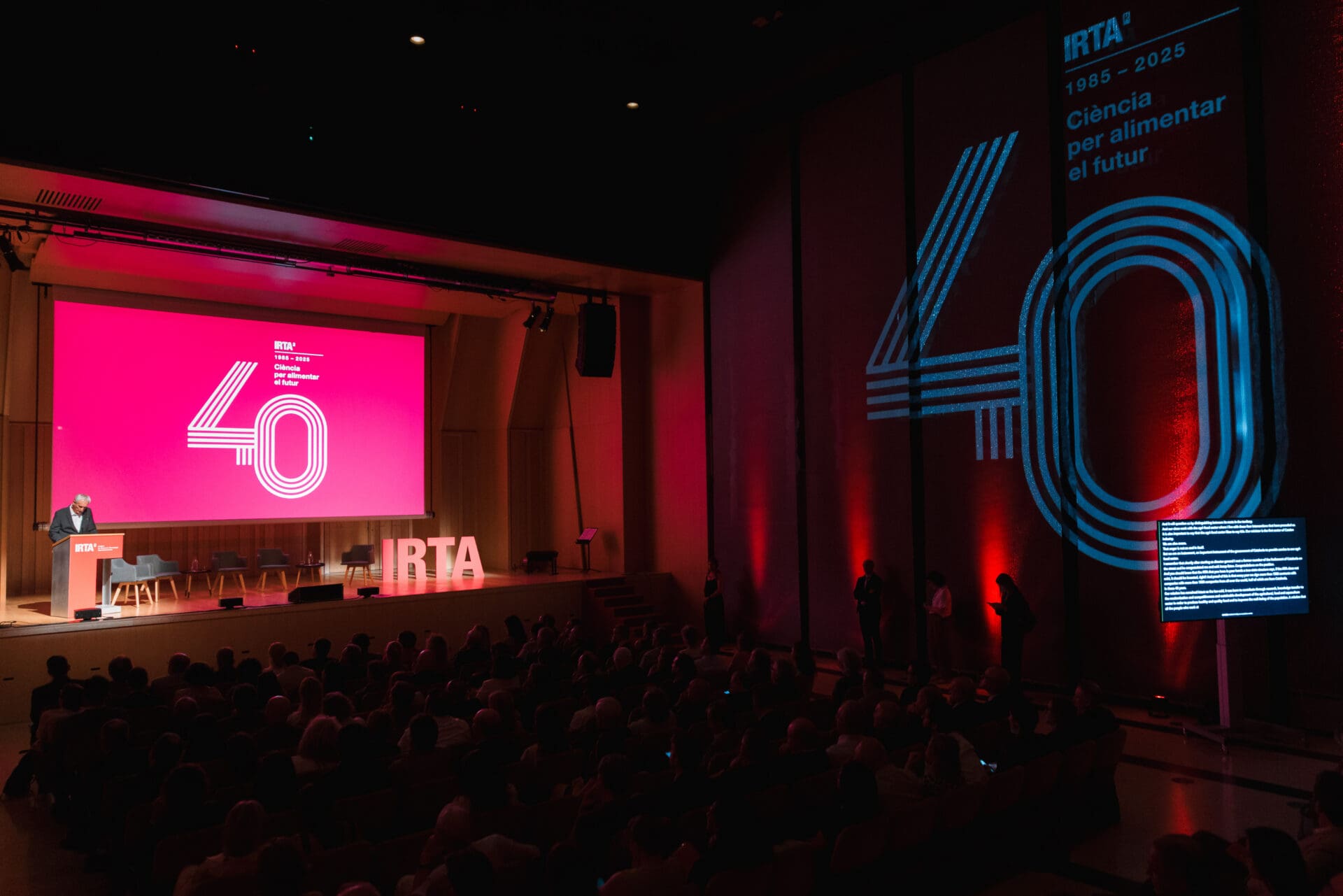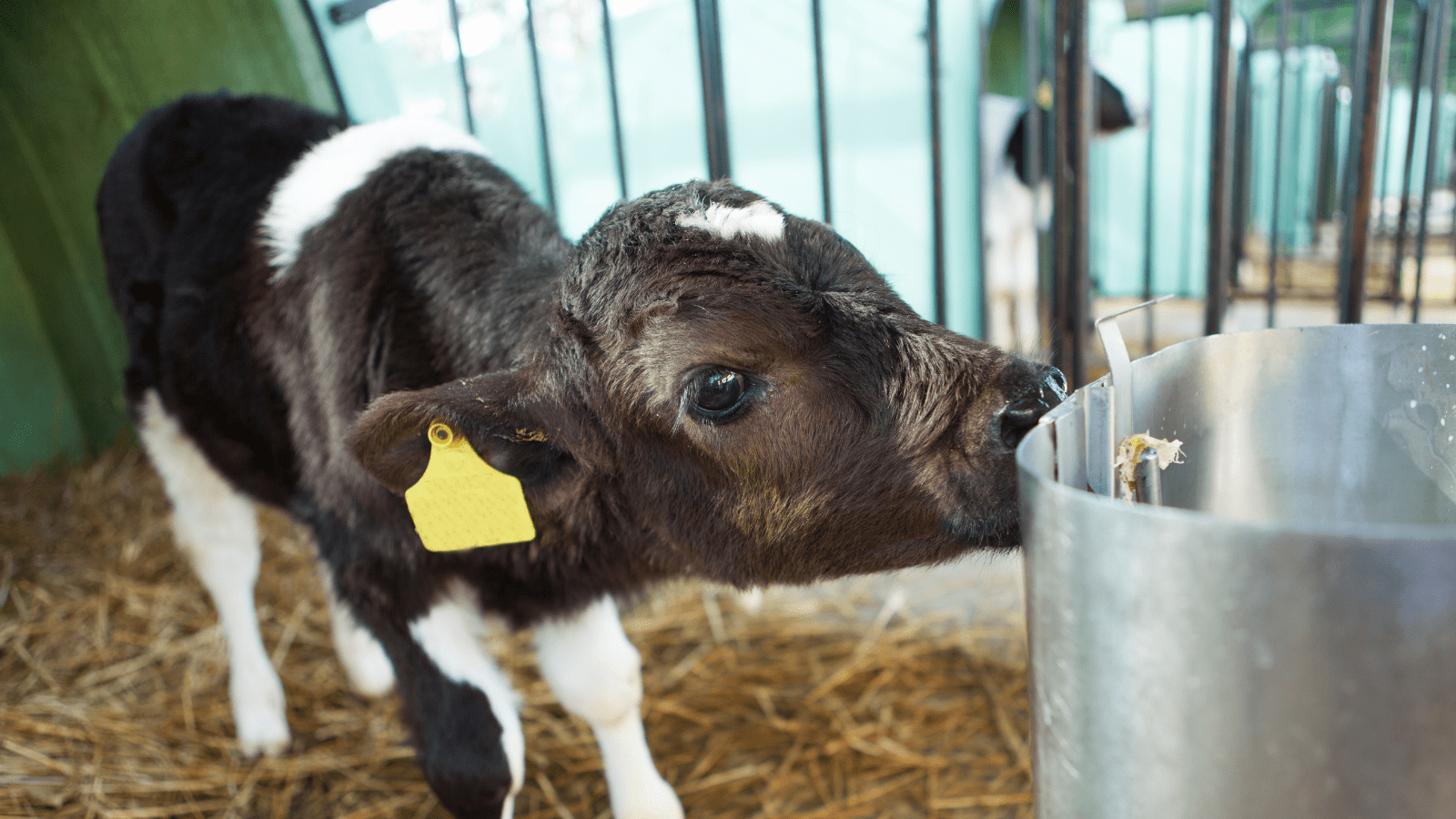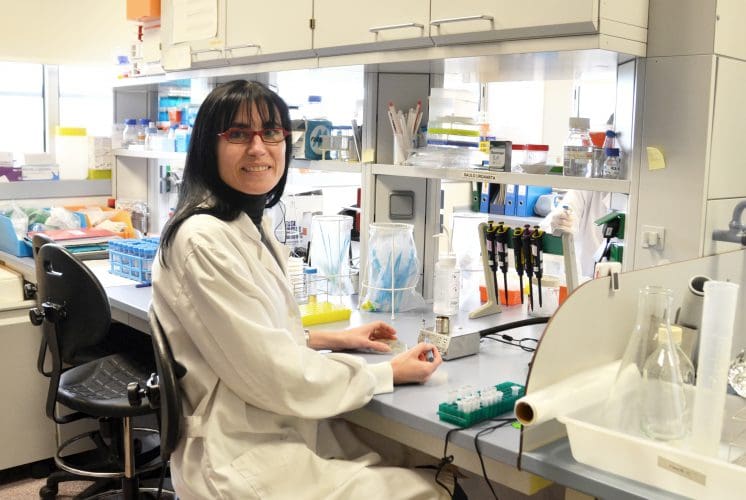
From Monday to Sunday, the World Awareness Week on Antimicrobial Resistance is celebrated all over the planet. An issue that is on the agenda of the UN and governments: almost a century after its discovery, antibiotics are losing effectiveness and it is necessary to act to minimize the human and animal deaths that this can entail. To understand what is happening, we talk to the researcher at the Centre for Research in Animal Health (CReSA) Virgina Aragón, who coordinates the strategic objective related to the reduction of the use of antimicrobials in animal production at the Institute for Agrifood Research and Technology (IRTA).
At the end of September, the United Nations General Assembly adopted a political declaration on antimicrobial resistance which last week resulted in a series of commitments resulting from a high-level ministerial meeting held in Saudi Arabia. It seems to be a really urgent matter.
It is a global urgency for people, for animals, and for the health of soil and water. Imagine a wild bird that migrates from one continent to another: it can carry resistant microorganisms from an outdoor farm in one country to a home in another country. The aim is for all countries to commit themselves and this is conveyed through the joint work of four institutions: the UN Environment Programme (UNEP); the United Nations Food and Agriculture Organisation (FAO); the World Organisation for Animal Health (WHO) and the World Health Organisation (WHO). But agreeing is not easy. For example, there are developing countries that are finding it difficult to sign up to reducing the use of antibiotics to prevent disease in animals, because they cannot be allowed to die a single animal. That is why these global commitments are very positive. In fact, IRTA is involved, because the global work on this topic is articulated through a platform of which we are part. In other words, we work at a very high political level, but at the same time institutions like ours have access to what is done and we can give our opinion.
In the UN political declaration, world leaders commit to reducing by 10%, by 2030, the approximately 4.95 million annual human deaths associated with bacterial resistance to antimicrobials, of which 1.2 million can be directly attributed to this resistance. This is a lot of people...
We are very focused on the resistance that bacteria generate to antibiotics because, in the case of viruses, more work has been done on vaccines and less on antivirals, which are only used in humans. That is, all microorganisms can generate resistance naturally, whether they are bacteria, viruses, fungi or parasites. But bacterial diseases have a great impact on human and animal health, and antibiotics are used at all levels. Before we discovered antibiotics, people died of bacterial diseases, and now we are not used to it. We thought that, with antibiotics, we were safe, and now many of those we had available are out. This is where the emergency comes from. You can have a surgical operation and not die from the operation, but because you catch an infection and they cannot treat you because there is no effective antibiotic.
“Anti-microbial resistance is a global urgency for people, animals, and the health of soils and waters”
And why are there no more antibiotics?
Companies develop an antibiotic for a long time and, shortly after releasing it to the market, resistance is generated. This has slowed down the development of more antibiotics.
They don’t think it’s worth it.
Today, the challenge is to develop molecules against which it is difficult for bacteria to generate resistance. One option is that these molecules have multiple targets, that is, they attack bacteria in various ways, so that they have to make more than one change to generate resistance.
Do we have to get on with it now, right?
Antibiotics were effective, cheap and therefore used a little happily, without the awareness that resistance could be generated. But it is a complex issue. For example, convincing a veterinarian who has always used antibiotics to treat animals after surgery to stop doing so is not easy. Without antibiotics, the veterinarian feels that he is running a risk; instead, the antibiotic gives him the peace of mind that there will be no infection. Veterinarians, and doctors too, have worked for a long time with this precautionary mindset, in itself.
We even took antibiotics for viral diseases...
At this stage, I think it is already clear that antibiotics only cure diseases caused by bacteria. But, as I said, it is more difficult to stop using them to prevent these diseases. In some farms, antibiotics were even used in low doses to make animals fatten more, something that has been banned in Europe since 2006. In Spain, in recent years there has been a radical change.
In what sense?
In 2014 the National Plan for Antibiotic Resistance (PRAN) was made, where many ministries collaborate. Since then, antibiotic consumption has been reduced by 13.5% in human health and by almost 70% in animal health. When you explain the problem, and you make everyone involved, collaboration is much easier. One example: there was an antibiotic, colistin, which was used in pig farms to prevent diarrhoea. There was a time when, despite certain side effects, it was seen that this antibiotic was the only one that worked in humans to control certain bacteria. It was decided that it had to be removed from the veterinary field to be available for people in serious situations. And, in a couple of years, colistin was voluntarily abandoned in veterinary medicine. There is still work to be done, but we are on the right track.
“The challenge lies in designing molecules that make it difficult for bacteria to develop resistance”
When we talk about resistance to antimicrobials, the major international institutions emphasize the concept of One Health, that is, the interrelation between human, animal, plant and environmental health. How do they connect?
When antibiotics are used in farm animals, a period, called withdrawal or suppression, must pass so that they disappear from the animal. Then, this animal can go to the slaughterhouse to become a food product. Thus, at the food level it is very difficult for antibiotic residues to be transmitted. But, if animals have resistant bacteria, the people who take care of them can acquire these bacteria and spread them. In addition, antibiotic residues can reach the environment, because they are eliminated by urine. And not just on farms. Also in hospital wastewater. These wastes, if they are not well treated, and today the treatment plants are not precisely designed for this, they can reach the sea or the land. If they reach the soil, in a place where it is grown, antibiotics can kill non-resistant bacteria and make resistant bacteria grow more. These resistant bacteria can contaminate plants and reach humans. And let’s not forget the pets! I remember a case of a person who was often infected by a bacterium, cured and re-infected. The problem only ended when he was treated, his whole family... and his dog.
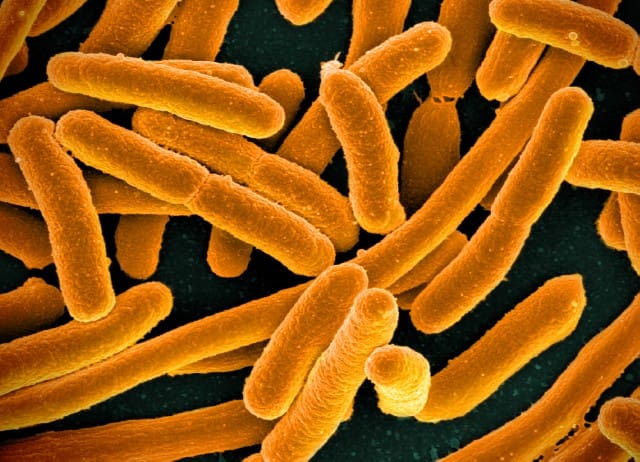
So, what are the keys to contain or minimize resistance to antimicrobials?
First, use them only when they should be used. Today it is almost impossible to go to a pharmacy and sell you antibiotics without a prescription, but doctors and veterinarians must think very well when making these recipes. Second, I think we can be smarter than bacteria and, as I mentioned before, make molecules that attack two sites of these microorganisms, or combine molecules, to make it much more difficult to generate resistance. If we succeed, they will have to be used correctly. This is very easy to say, but when you are a doctor or veterinarian and you have a problem that cannot wait for a diagnosis that will take a week, you need to act. For this reason, another key is rapid diagnostics. Like the tests that were created for COVID-19.
The political representatives gathered last weekend in Saudi Arabia regret the global lack of resources to investigate new vaccines, diagnoses and alternative therapies to antimicrobials for animals.
I would say that the people who gathered are responsible for this happening and have the ability to reverse it.
Are there any private funds?
They can always help, but the main source of funding for research is governments. And we need to give new impetus to vaccines for bacteria, because for a long time it has been easier and cheaper to use antibiotics. In fact, in animal production, companies are very interested in these vaccines. And the more money there is, the better. We checked with COVID-19: those who had money developed the vaccine. In Spain there were groups with the possibility of taking vaccines, but there was less money. The money helps to go faster and maintain the staff. And that is also very important. We need young scientists, who can bring new ideas. Many leave science because they want stability. More, in the case of women, for motherhood.
Antimicrobial resistance has a very large economic impact due to the costs they entail for the health system. According to a report by, among others, the World Organization for Animal Health (WHOA) and the World Bank, published in September and focused on the use of antibiotics, we should be very careful to invest in new antibiotics and adequate treatments for the disease...
One way would be for governments to do what they did with COVID-19: to guarantee to companies or research groups that they will buy the antimicrobial molecules they develop. There must be a more global policy for the development of new antibiotics.
“It is essential to reinvigorate the development of bacterial vaccines, as relying on antibiotics has long been the easier and more cost-effective option”
For IRTA, it is also a key issue. Specifically, one of the scientific goals of the new Strategic Plan 2024-2027 is to guarantee the health and well-being of animals in the scenario of antibiotic reduction. You are the coordinator of this goal.
We have several centres and programmes and we intend to coordinate efforts and create synergies. Perhaps what is being done in genetics to improve the resistance of animals to diseases can be combined with work done in animal health, or nutrition, where it investigates how to feed them to improve their immune system. Every year we meet all those who work in these areas. Understanding what others are doing broadens your perspective.
What is your main challenge?
Improve the health of animals so that they do not become ill and can fight diseases naturally.
For more than twenty years you have been working at CReSA, which is part of IRTA. Can you give us a brief summary of your experience in the institution?
When I arrived at CReSA, I had been working for almost seven years in the bacteriology of human diseases in three centers in the United States. I returned with three children and started looking for a job, without thinking about the animal health sector, but at CReSA they offered me the opportunity to sign up as a postdoctoral researcher. I decided to do it so. We started by investigating the characteristics of a specific pathogenic bacterium and, little by little, we extended the focus to the microbiota of the nose of the pigs and their interaction with pathogenic bacteria, to better control respiratory diseases. I started with a project and accompanied by a student, and now we are a group of more than ten people and we join forces from various fields. I used to spend my day in the laboratory and now I don’t have time, because I dedicate myself, above all, to coordination... And to paperwork!
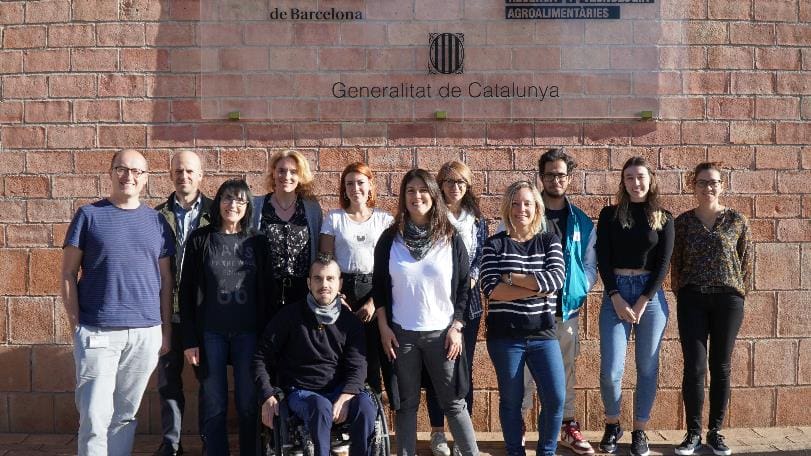
As you mentioned, you have focused a lot on respiratory bacterial diseases in pigs. How important is this knowledge for a sector that is extremely powerful in Catalonia and Spain?
How do you transfer it and what repercussions does it have? We are lucky to be very in touch with the livestock sector and with companies. We present them with results and discuss them together. Also, they explain their needs and we consider how to guide research. And we do studies together.
Any project you feel especially satisfied with?
As I explained before, in the nose of the piglets there are bacteria, both good and bad, that compete with each other. Recently, through studies of this nasal microbiota, we have determined a set of nose bacteria that can be inoculated in piglets to prevent respiratory diseases. The idea is to select in the laboratory some strains that we have proven to be good, beneficial, and inoculate them in piglets to prevent bad bacteria, pathogens, from colonizing their nose. In the future, it would be very interesting to make an à la carte probiotic for each farm depending on the composition of the nasal microbiota of its piglets.
Finally. What message or recommendation would you give to citizens who read you about antimicrobial resistance?
Don't take antimicrobials if you don't have to take them. We hope that, in a while, they will give you the right doses for the days you need and they will not overwhelm you. Until this happens, return them to the pharmacy and recycle them in designated containers to avoid generating unnecessary waste.

